#archaeology in Greece
Note
Hi! I was reading your pinned post and realized that you were a professor at PSU! I’m currently an archaeology/ancient mediterranean studies student here, so that’s pretty cool. Anyways, I was just wondering if you knew about any on going research projects going on regarding Alexander the Great (or anything related). May it be digs, archival work, research- I’m super interested in this area of history and wanna get involved!! Sorry if this is a long shot but I wanted to ask. Thanks!
Hello, there, fellow Nittany Lion!*
Yes, I got my PhD from Penn State and taught there for Religious Studies and Classics both as a lecturer back in the late 1990s.
As for digs, there is one at Pella, but it's already filled out for this season. But keep an eye on it; I believe next season may be the last? I've got a former student who'll be there this year (and perhaps next).
Dig at Pella via AIA
Pella Urban Dynamics Project (U. Mich)
Keep an eye on the AIA (Archaeological Institute of America) site for other opportunities in Greece.
Also, message me if you would, so I have your actual name and email, and I'll keep you in mind if I hear of other opportunities. Let me know who you're studying with at PSU (Mark Munn?). Dr. Munn has digs of his own, and TBH, when it comes to experience with archaeology, any dig will give you some experience.
You should also look into summer programs offered through the American School of Classical Studies at Athens. They've had Macedonia-centric programs in the past. One, in fact, got tanked by Covid. So bookmark that site and, in fact, explore it thoroughly, if you're not already well familiar with the ASCSA.
(Spelling out some of these acronyms for those unlikely to recognize them.)
--------
* For the unintiated wondering what the heck a "Nittany" Lion is ... it's a (mountain) lion that lives on Mt. Nittany, of course. *snort* Penn State (located in State College, PA) nestles in "Happy Valley" which lies between (low) mountain ranges, and one of these is "Mount Nittany." It's actually an extremely lovely place, but also one of the few I had SERIOUS allergy problems for my entire 8 years there. Pollen counts are crazy.
#American School of Classical Studies in Athens#Pella Urban Dynamics Project (U. Mich)#Pella Greece#ancient Macedonia#ancient Pella#Alexander the Great#archaeology in Greece#archaeology in Northern Greece#Penn State#asks
5 notes
·
View notes
Text
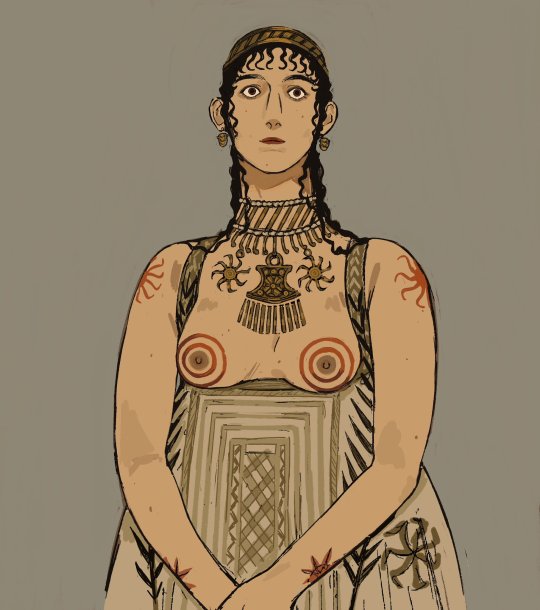

She
52K notes
·
View notes
Text
so. um. the good news is we found your boyfriend. the bad news is that, well, we sort of…dug him up…in the middle of a car park. in leicester (buckley et al. 2013). leicester, yeah. sorry. they demolished the friary he was hastily interred in when henry viii dissolved all the monasteries. you know how it is. and as it turns out, well, shakespeare was…sort of right about him. scoliosis, yeah, sorry (appleby et al. 2014). if it makes you feel any better we analysed his bones and it turns out he had a pretty high-protein diet before he died (lamb et al. 2014). and he drank so much wine that it changed their chemical composition, which we didn't know could actually happen before we analysed him (lamb et al. 2014), so he was having a good time, at least.
BIBLIOGRAPHY
Appleby, J., Mitchell, P.D., Robinson, C., Brough, A., Rutty, G., and Morgan, B. (2014). The scoliosis of Richard III, last Plantagenet King of England: diagnosis and clinical significance. Lancet 383, 1944.
Buckley, R., Morris, M., Appleby, J., King, T., O’Sullivan, D., and Foxhall, L. (2013). ‘The king in the car park’: new light on the death and burial of Richard III in the Grey Friars church, Leicester, in 1485. Antiquity 87, pp. 519-538.
Lamb, A.L., Evans, J.E., Buckley, R., and Appleby, J. (2014). Multi-isotope analysis demonstrates significant lifestyle changes in King Richard III. Journal of Archaeological Science 50, pp. 559-565.
#found this in my drafts thought it was still funny#archposting#richard III#archaeology#alevelposting#<- contains tudors memes#i've actually met one of the cited authors here they were very cool. we weren't talking about riii though (bronze age greece)
6K notes
·
View notes
Text
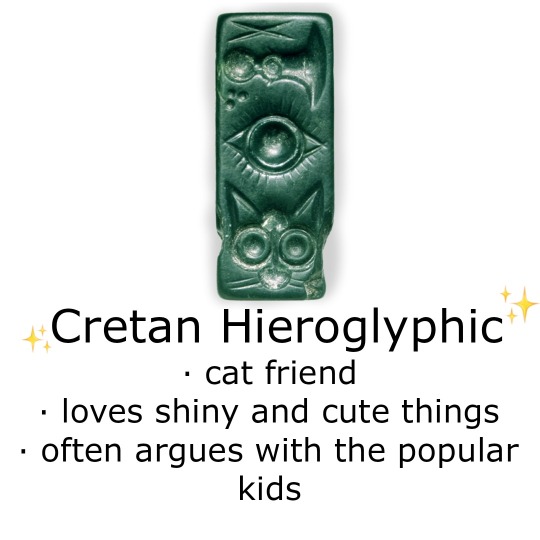
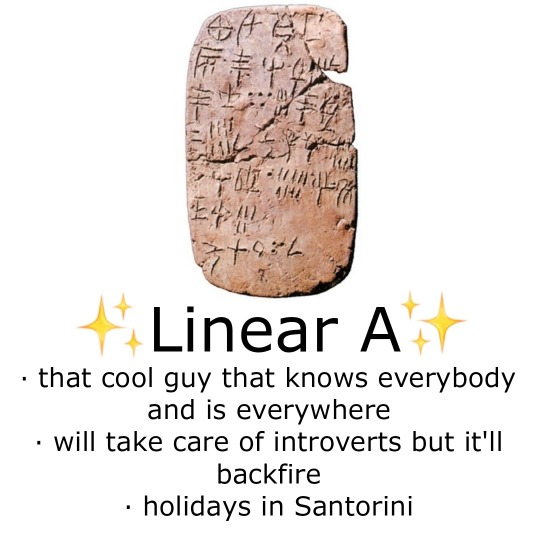


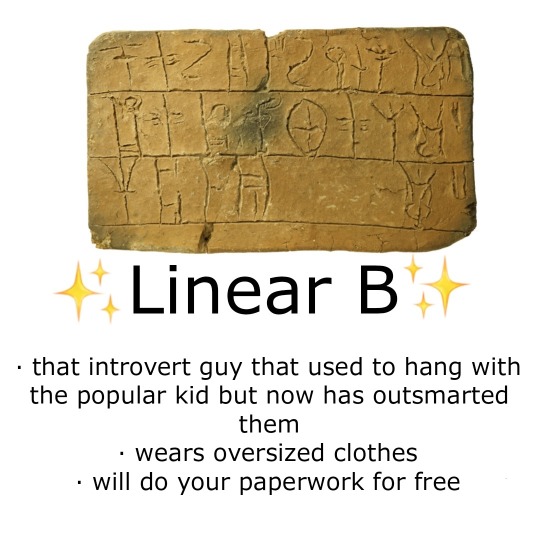

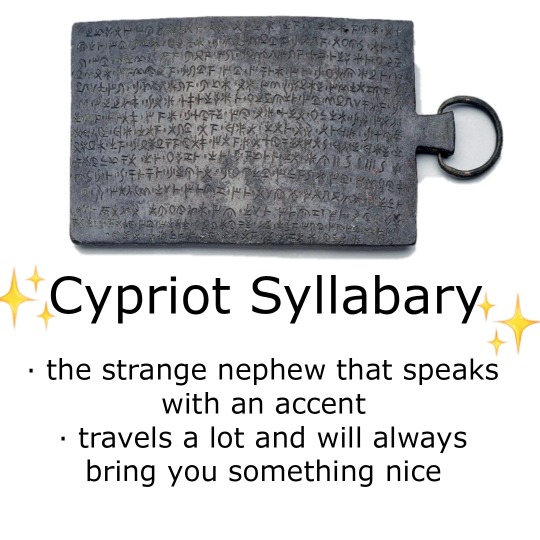
✨ tag yourself ✨ but with Aegean Scripts! Mainly Bronze Age, with a sprinkle of Iron Age (Cypriot Syllabary).
#tagamemnon#ancient greece#crete#minoan#scripture#history#classics#bronze age#cretan hieroglyphic#linear a#phaistos disc#linear b#cyprominoan#cypriot Syllabary#arkalochori axe#archaeology#tag yourself
3K notes
·
View notes
Text

~ Coin, Tetradrachm: A. Head of Athena, three olive leaves on the helmet; B. AΘE
Country/Issuer: Ancient Greece, Attica Athenes
Date: 5th century B.C.
Medium: Silver
#ancient#ancient art#history#museum#archeology#archaeology#ancient history#coin#ancient coins#money#numismatics#athens#attica#ancient greece#greece#ancient greek#tetradrachm#athena#silver#5th century B.C.
2K notes
·
View notes
Text

Head of Dionysus, the god of wine, uncovered in an archaeological dig in the ancient city of Aizanoi, Turkey
#dionysus#head#bust#sculpture#mythological#mythology#god#wine#archaeology#art#history#ancient#ancient greek#ancient greece#greek mythology#greek#greece#ancient roman#roman
20K notes
·
View notes
Text
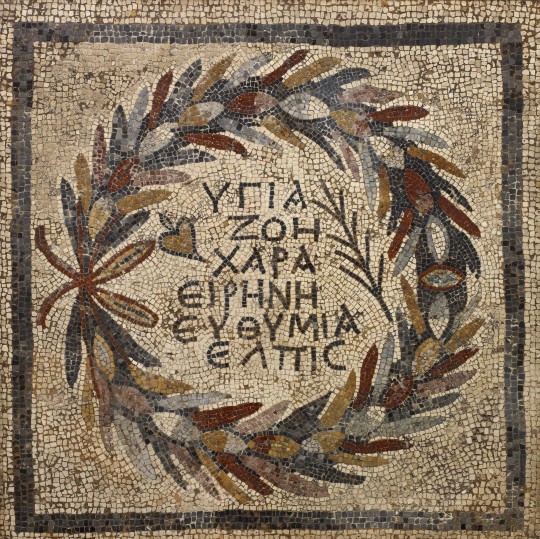
Late Roman stone mosaic from the Greek city of Halicarnassus, Caria (modern Bodrum, Turkey), dated 4th century AD, now in the British Museum. A coloured laurel wreath encloses a Greek inscription with the following words:
ΥΓΙΑ "Health"
ΖΟΗ "Life"
ΧΑΡΑ "Joy"
ΕΙΡΗΝΗ "Peace"
ΕΥΘΥΜΙΑ "Happiness"
ΕΛΠΙϹ "Hope"
🏛️: © The Trustees of the British Museum
#classics#classical antiquity#ancient greece#classical archaeology#halicarnassus#caria#british museum#ancient greek
1K notes
·
View notes
Text

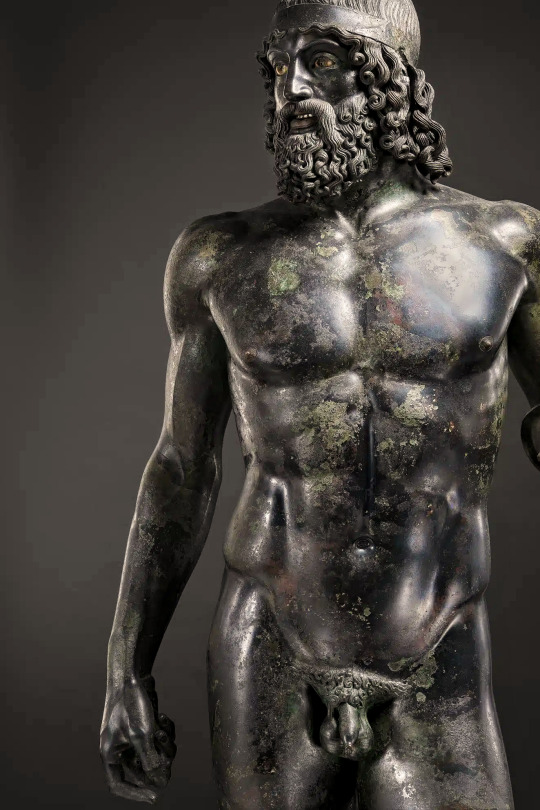





One of two full-size ancient Greek bronzes discovered in 1972 off the western coast of Calabria in southern Italy. The statue, cast circa 460-450 BC, stands 198 cm (78 in) tall. The lips and nipples are made of copper, the teeth are silver and the eyes formed from calcite. At one time this bronze warrior held a spear and shield, but they were never found. The figure may also have worn a wreath around his head. ( Photography by Luigi Spina. )
#art history#mythology#culture#ancient greece#greek mythology#warriors#antiques#vintage#art#sculpture#people#statue#retro#muscle#humanity#male beauty#history#archaeology#explore#mediterranean#greece#italy#bronzi di riace#🍕🍷
2K notes
·
View notes
Text
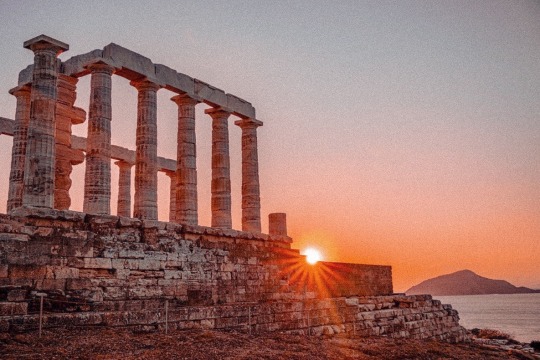

temple of poseidon, sounion, greece
#temple of poseidon#sounion#greece#ancient greece#film photography#filmisnotdead#architecture#ancient history#archaeology#ruins#ocean#sea#sunset#pastel#photographers on tumblr#original photographers#lensblr#diary
414 notes
·
View notes
Text


The Riace Bronzes were found in the sea off the coast of Italy in 1972. They are life sized, bearded warriors cast in the 5th century BCE. Ancient Greek bronzes rarely survive as many were later melted down. We only really know how Ancient Greek bronze sculptures looked like because the Romans were copycats.
Reggio di Calabria, Italy
#ancient art#Ancient Greek#Ancient Greece#bronze#statue#art history#Italy#Italia#Reggio calabria#travel#original photography#iphonography#museum#archaeology#photographers on tumblr#photography#lensblr#history#wanderingjana
537 notes
·
View notes
Text
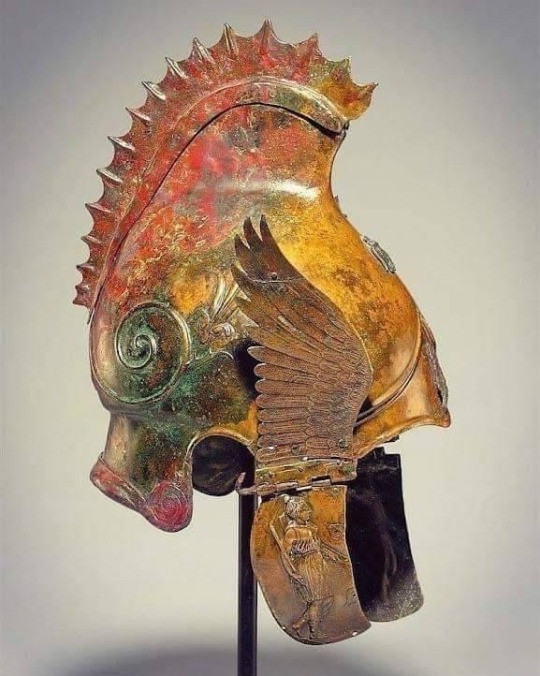
Bronze Winged Helmet (4th Century BC), Phrygian-Chalcidian type with a spiked crest.
1K notes
·
View notes
Text
Ancient and modern depiction of octopi

Marine style vases, minoan period (2600-1400 BC)

Squidward J. Q. Tentacles in "Culture Shock" (S1 EP10a, 1999) - Spongebob Squarepants
-----
This scratches my brain so beautifully, it may be the best thing I've ever connected
877 notes
·
View notes
Text
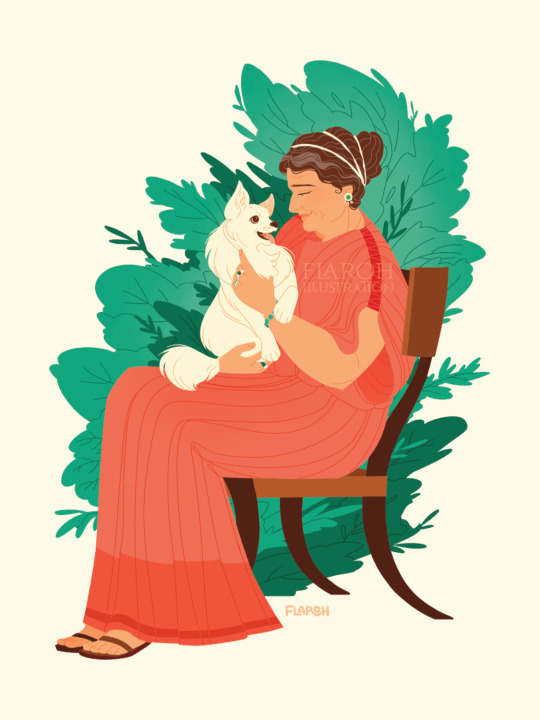
"This is the tomb of the dog, Stephanos, who perished. Whom Rhodope shed tears for and buried like a human.
I am the dog Stephanos, and Rhodope set up a tomb for me"
This piece is a tribute to two members of the ancient world, who lived in the Greek city of Termessos in modern day Turkey. We know about them today as Stephanos, a dog, had a tomb dedicated to him by his owner, Rhodope, who was also laid to rest nearby. As far as I can research, we don't know the exact details of when they lived, or much about their lives, except that Rhodope wanted us to know how much Stephanos meant to her.
His tomb was found near Rhodope’s own inscribed sarcophagus, which states that she set up the tomb completely and exclusively for herself. This suggests she was a single, independent wealthy woman.
Stephanos' remains are lost to time, but based on the size, and his role as a lady's companion dog, it is likely he was a melitan breed. This breed was a small, spitz-type dog that was incredibly popular in antiquity.
#tagamemnon#rhodope and stephanos#ancient greece#classical studies#greek archaeology#ancient turkey#flaroh illustration
2K notes
·
View notes
Text
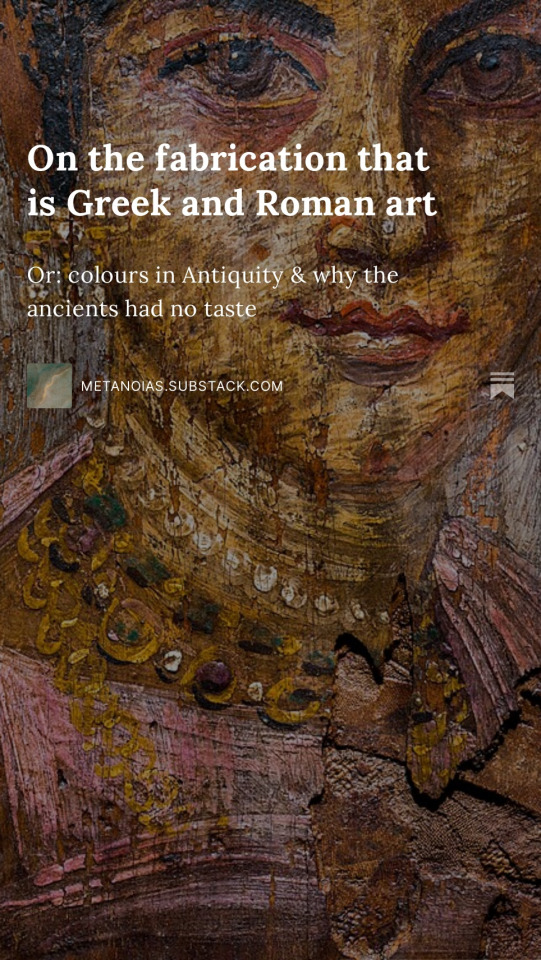
When you think of ancient Greece or the Roman Empire, visions of white togas, ivory temples and sand-coloured amphitheatres likely come to mind.
If so, you might be in for a surprise.
Because this off-white and eggshell-dominated palette, which inspired the pristine surfaces of Renaissance sculptures and the blank facades of Neoclassical buildings, is… a lie.
We now know the ancient world was steeped in colour. It was, perhaps, a tad too colourful for our modern sensibilities — even borderline garish at times.
Click here to learn why generations of scholars and artists believed in a monochrome Classical Antiquity and see historically accurate reconstructions of ancient statues and buildings in all their glorious peacockery.
#art#ancient art#ancient greece#ancient rome#ancient history#ancientmonuments#ancient cities#ancient civilizations#ancient sculpture#roman empire#roman art#art history#history#archeology#archaeology#colors#colours#colour#italy#greece#greek mythology#roman mythology#ancient greek#rome#rome italy#histoire#historic
715 notes
·
View notes
Text
The Petelia Tablet, Greek, c.300-200 BCE: this totenpass (a "passport for the dead") was meant to be buried in a human grave; it bears an inscription that tells the dead person exactly where to go and what to say after crossing into the Greek Underworld
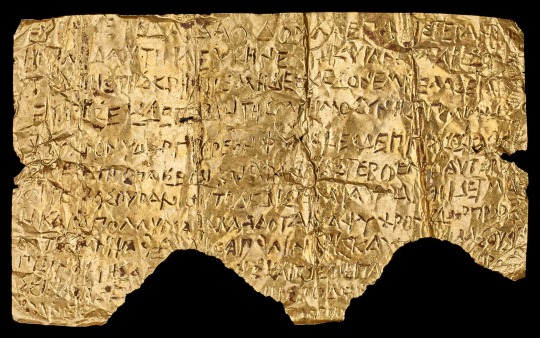
Made from a sheet of gold foil, this tablet measures just 4.5cm (a little over 1.5 inches) in length, and although it was found inside a pendant case in Petelia, Italy, it's believed to have originated in ancient Greece. It was meant to aid the dead in their journey through the Underworld -- providing them with specific instructions, conferring special privileges, and granting them access to the most coveted realms within the afterlife.
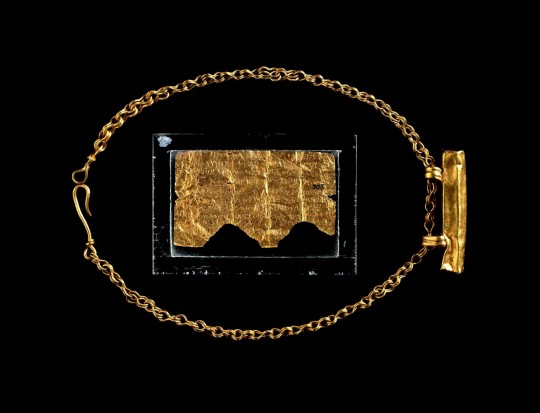
The Petelia tablet, displayed with the pendant case in which it was discovered
The tablet itself dates back to about 300-200 BCE, while the pendant case/chain that accompanies it was likely made about 400 years later, during the Roman era. It's believed that the tablet was originally buried with the dead, and that an unknown individual later removed it from the burial site and stuffed it into the pendant case. Unfortunately, in order to make it fit, they simply rolled it up and then snipped off the tip of the tablet. The final lines of the inscription were destroyed in the process.

The inverse side of the Petelia tablet
These textual amulets/lamellae are often referred to as totenpässe ("passports for the dead"). They were used as roadmaps to help guide the dead through the Underworld, but they also served as indicators of the elite/divine status of certain individuals, ultimately providing them with the means to obtain an elevated position in the afterlife.
The Petelia tablet is incised with an inscription in ancient Greek, and the translated inscription reads:
You will find a spring on your left in Hades’ halls, and by it the cypress with its luminous sheen.
Do not go near this spring or drink its water. You will find another, cold water flowing from Memory’s lake; its guardians stand before it.
Say: "I am a child of Earth and starry Heaven, but descended from Heaven; you yourselves know this. I am parched with thirst and dying: quickly, give me the cool water flowing from Memory’s lake."
And they will give you water from the sacred spring, and then you will join the heroes at their rites.
This is [the ... of memory]: [on the point of death] ... write this ... the darkness folding [you] within it.
The final section was damaged when the tablet was shoved into the pendant case; sadly, that part of the inscription does not appear on any of the other totenpässe that are known to exist, so the meaning of those lines remains a mystery (no pun intended).
Lamellae that are inscribed with this motif are very rare. They're known as "Orphic lamellae" or simply "Orphic tablets." As the name suggests, these inscriptions are traditionally attributed to an Orphic-Bacchic mystery cult.
The inscriptions vary, but they generally contain similar references to a cypress tree, one spring that must be avoided, another spring known as the "Lake of Memory," the sensation of thirst, and a conversation with a guardian (or another entity within the Underworld, such as the goddess Persephone) in which the dead must present themselves as initiates or divine individuals in order to be granted permission to drink from the Lake of Memory. They are thereby able to obtain privileges that are reserved only for the elite.
Though the specifics of this reward are often vague, it may have been viewed as a way to gain access to the Elysian Fields (the ancient Greek version of paradise) or as a way to participate in sacred rites; some totenpässe suggest that it may have allowed the soul to break free from the eternal cycle of reincarnation. Regardless, the overall objective was likely the same: to obtain a special status and acquire privileges that were inaccessible to most of the souls in the Underworld.
Sources & More Info:
Altlas Obscura: The Ancient Greeks Created Golden Passports to Paradise
The Museum of Cycladic Art: The Bacchic-Orphic Underworld
Bryn Mawr College: Festivals in the Afterlife: a new reading of the Petelia tablet
The Getty Museum: Underworld (imagining the afterlife)
The British Museum: Petelia tablet (with pendant case; chain)
#archaeology#history#anthropology#ancient greece#ancient history#greek mythology#Petelia tablet#Greek mysteries#orphic mysteries#orphism#greek underworld#hades#persephone#anthropology of death#religon#afterlife#tw death#classical antiquity#classical archaeology#ticket to paradise#whoever damaged this#probably#got#a#ticket#to tartarus#instead
2K notes
·
View notes
Text

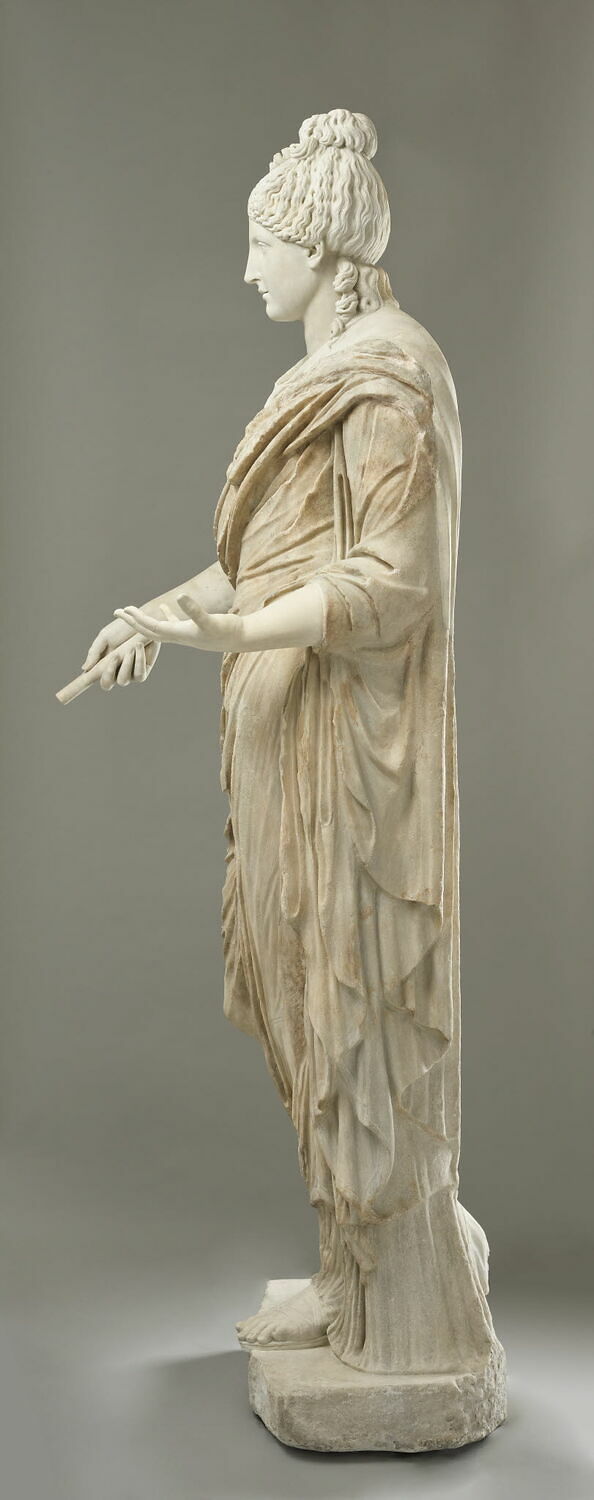
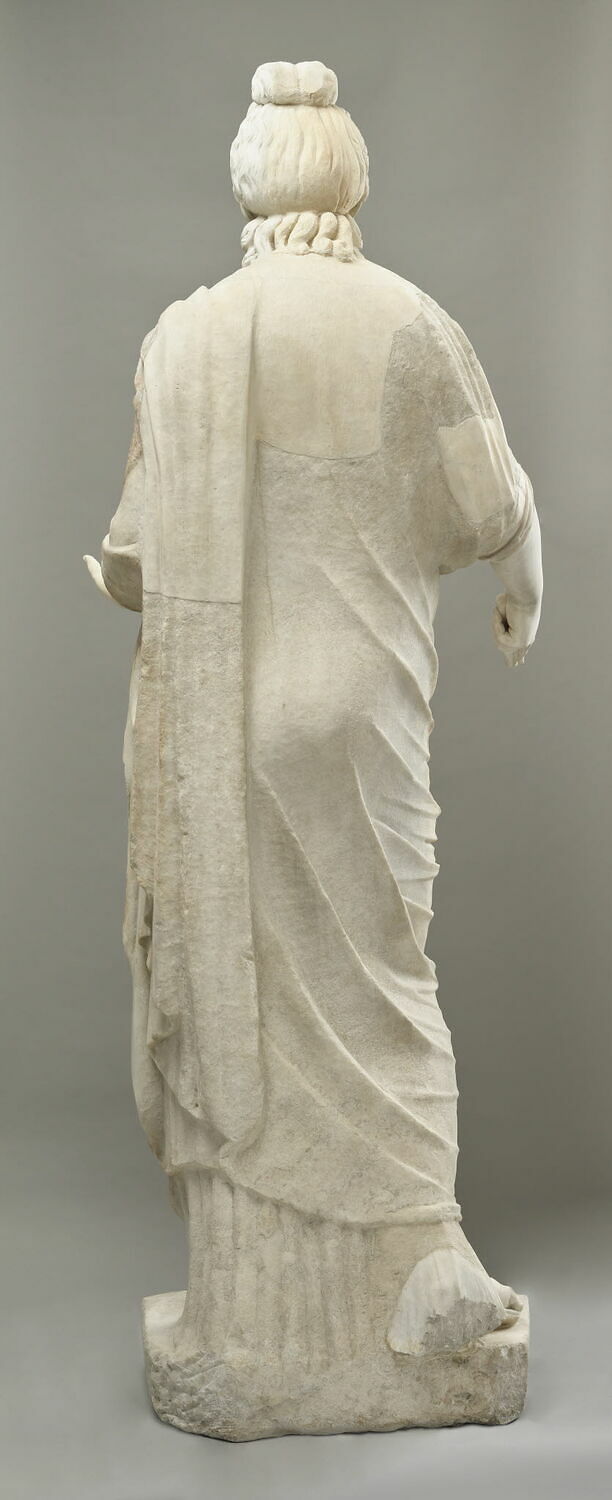



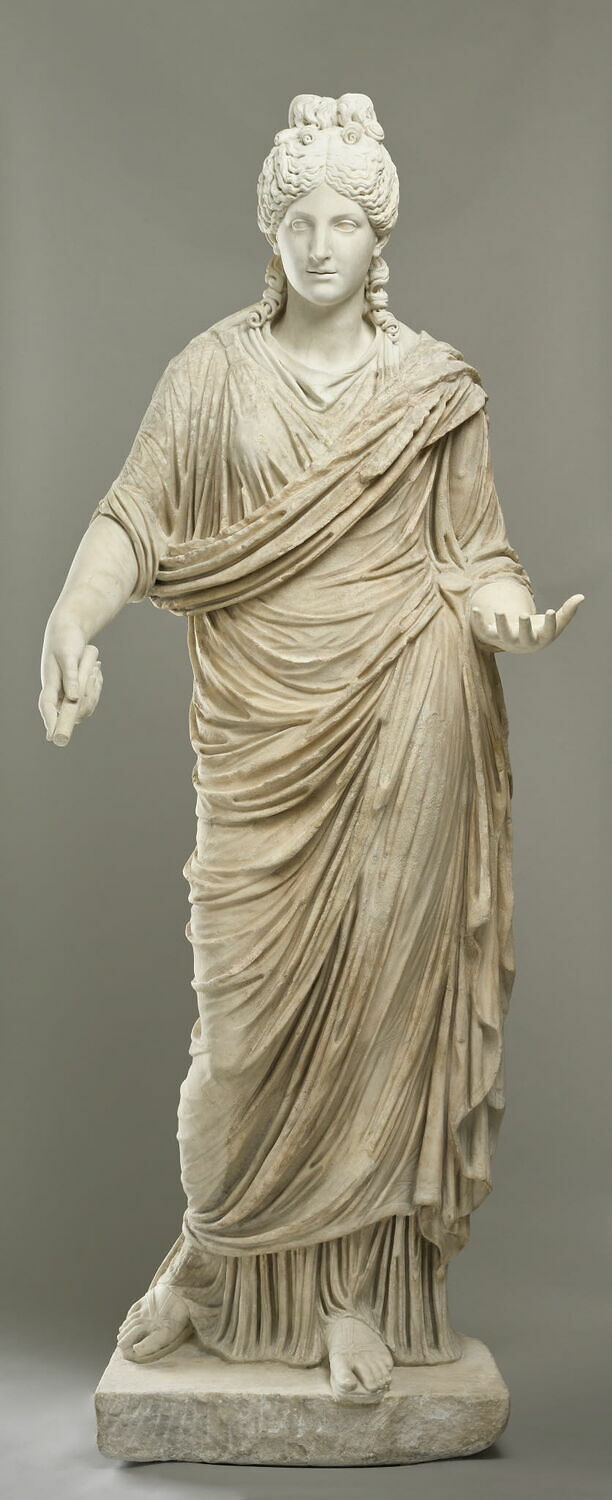
~ Chairopoleia.
Date: A.D. 1-50
Place of origin: Thera, Santorini
Medium: Marble
#ancient#ancient art#history#museum#archeology#ancient sculpture#ancient history#archaeology#marble#greek#greece#thera#Santorini#1st century#ancient greek#Chairopol#Chairopoleia#a.d. 1#a.d. 50
938 notes
·
View notes